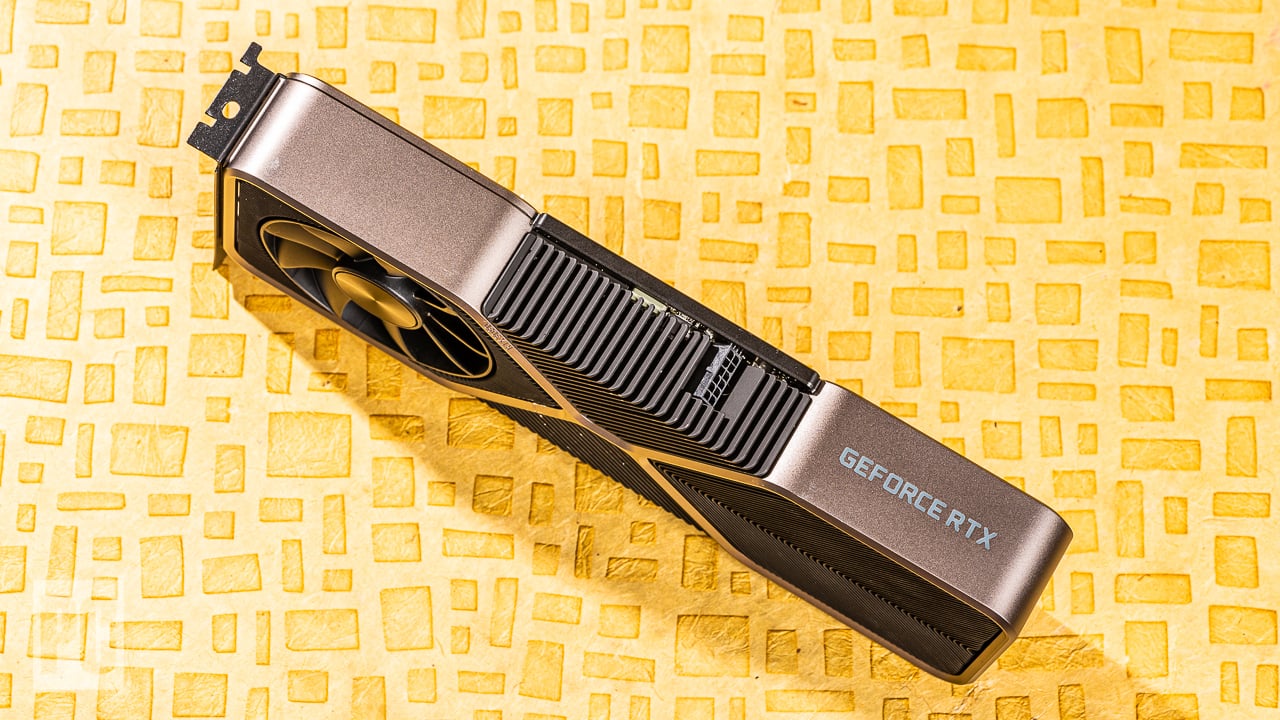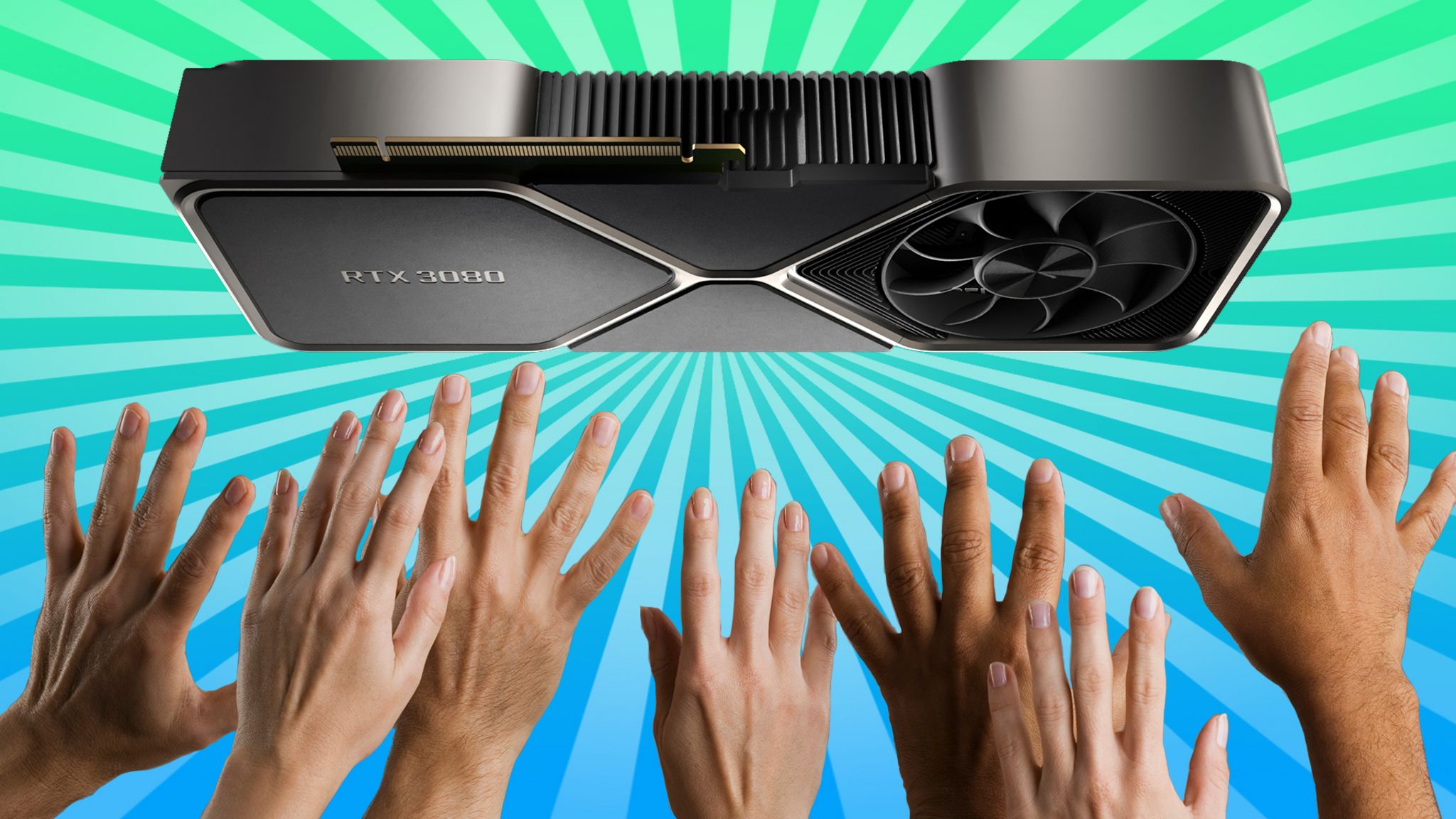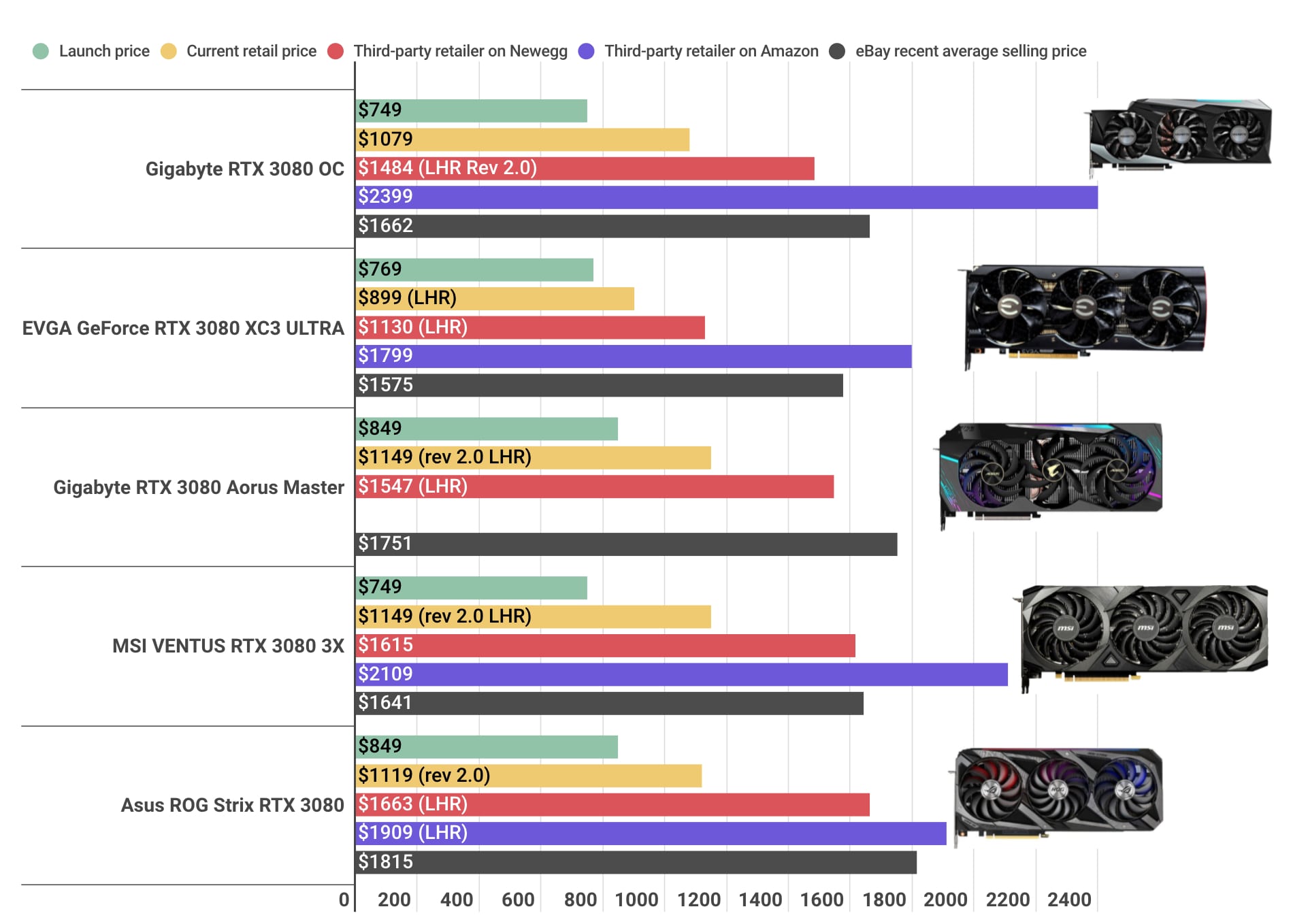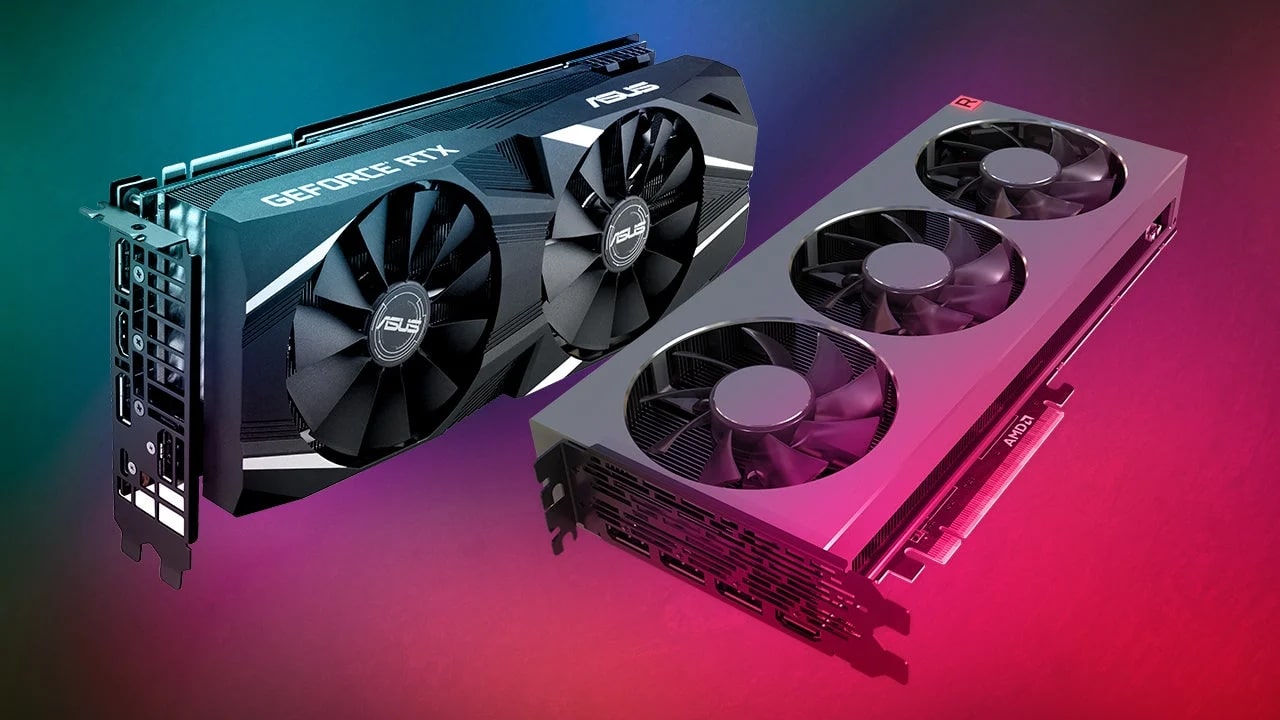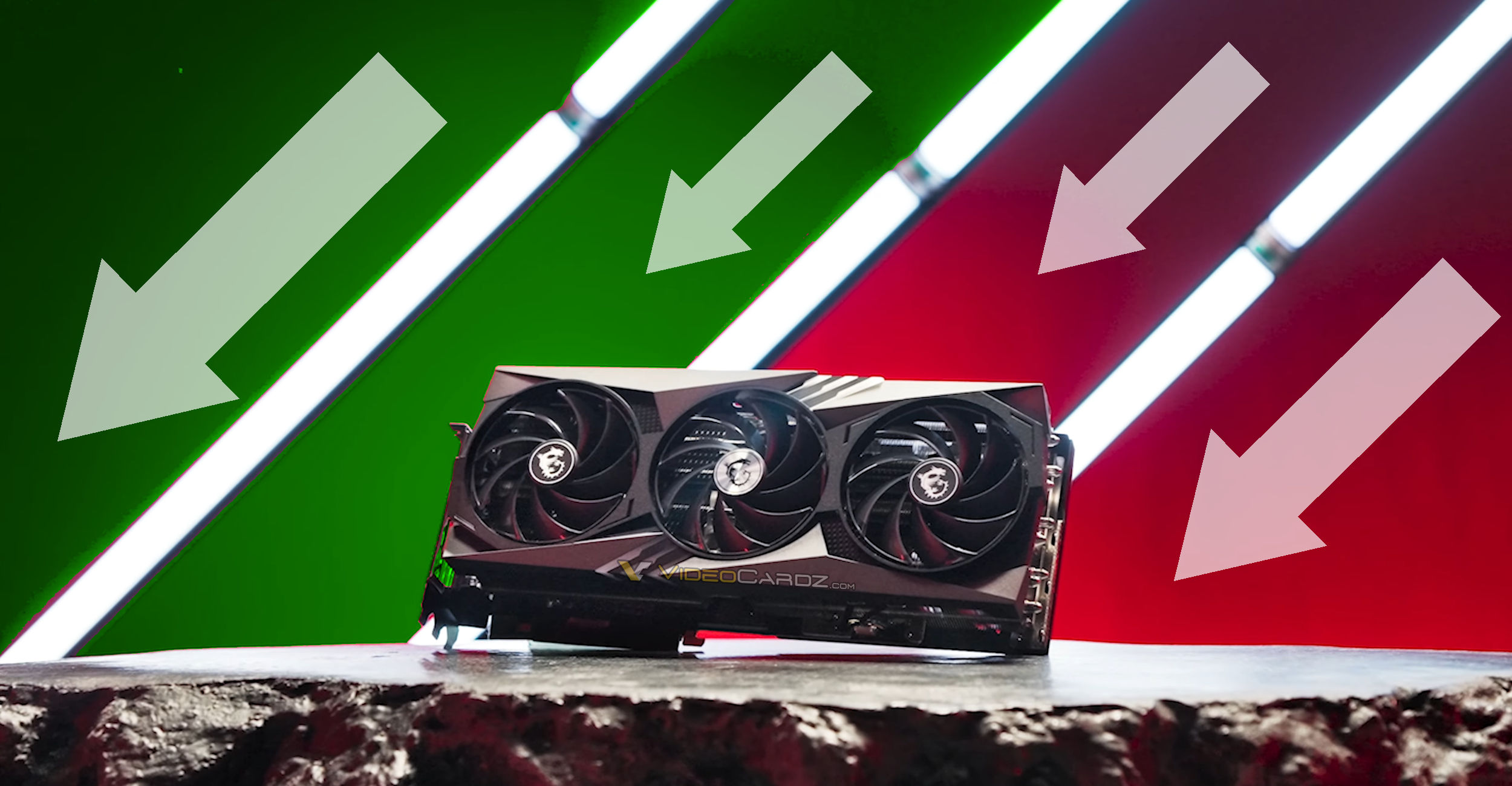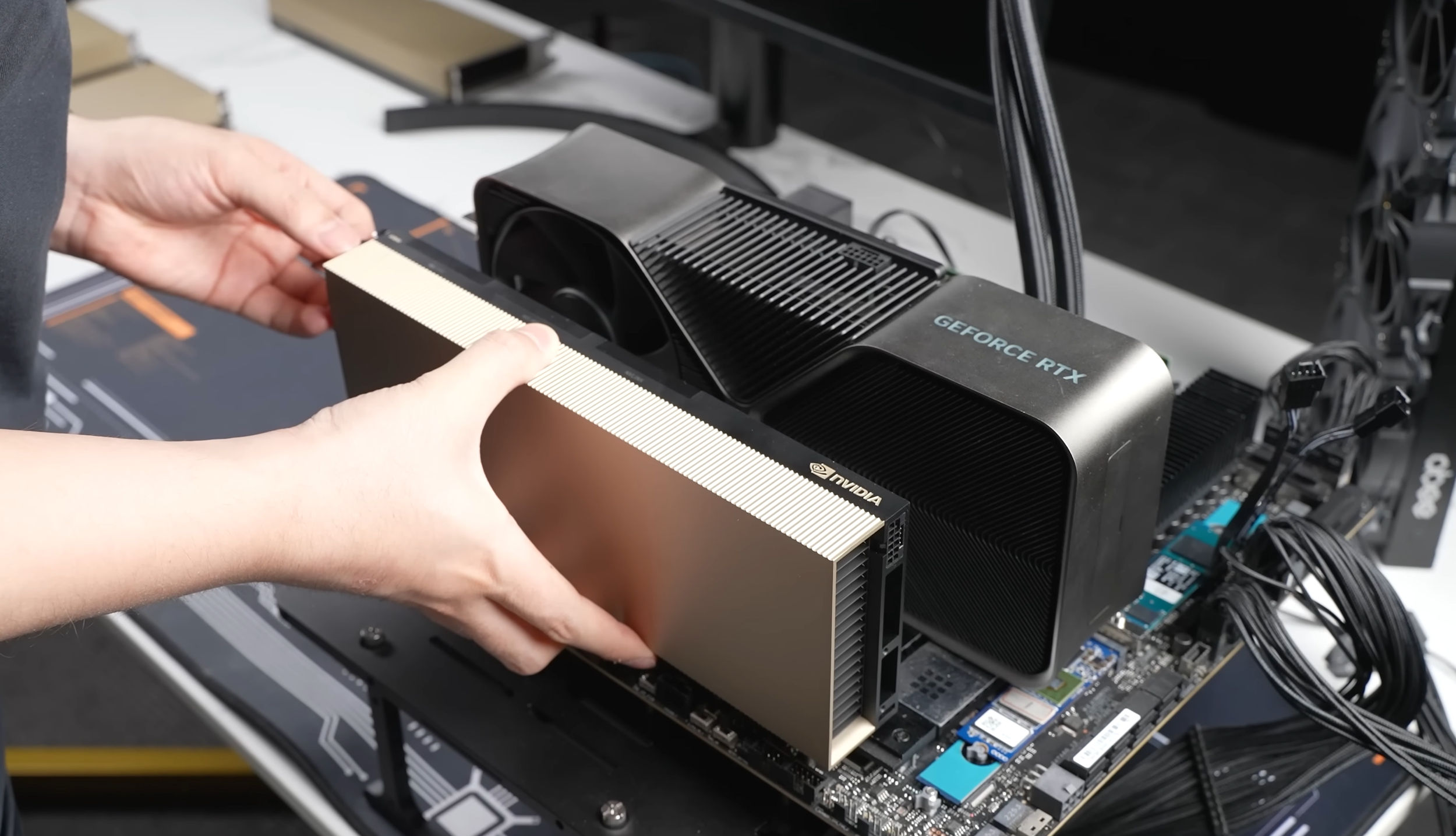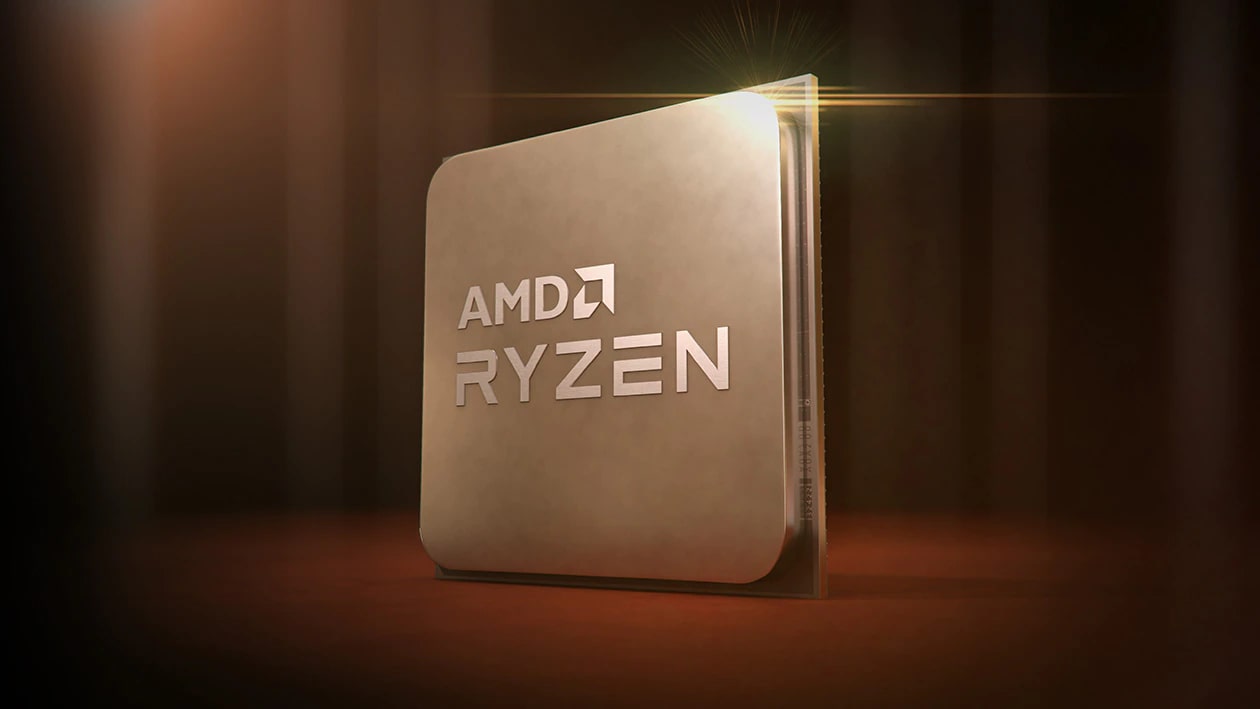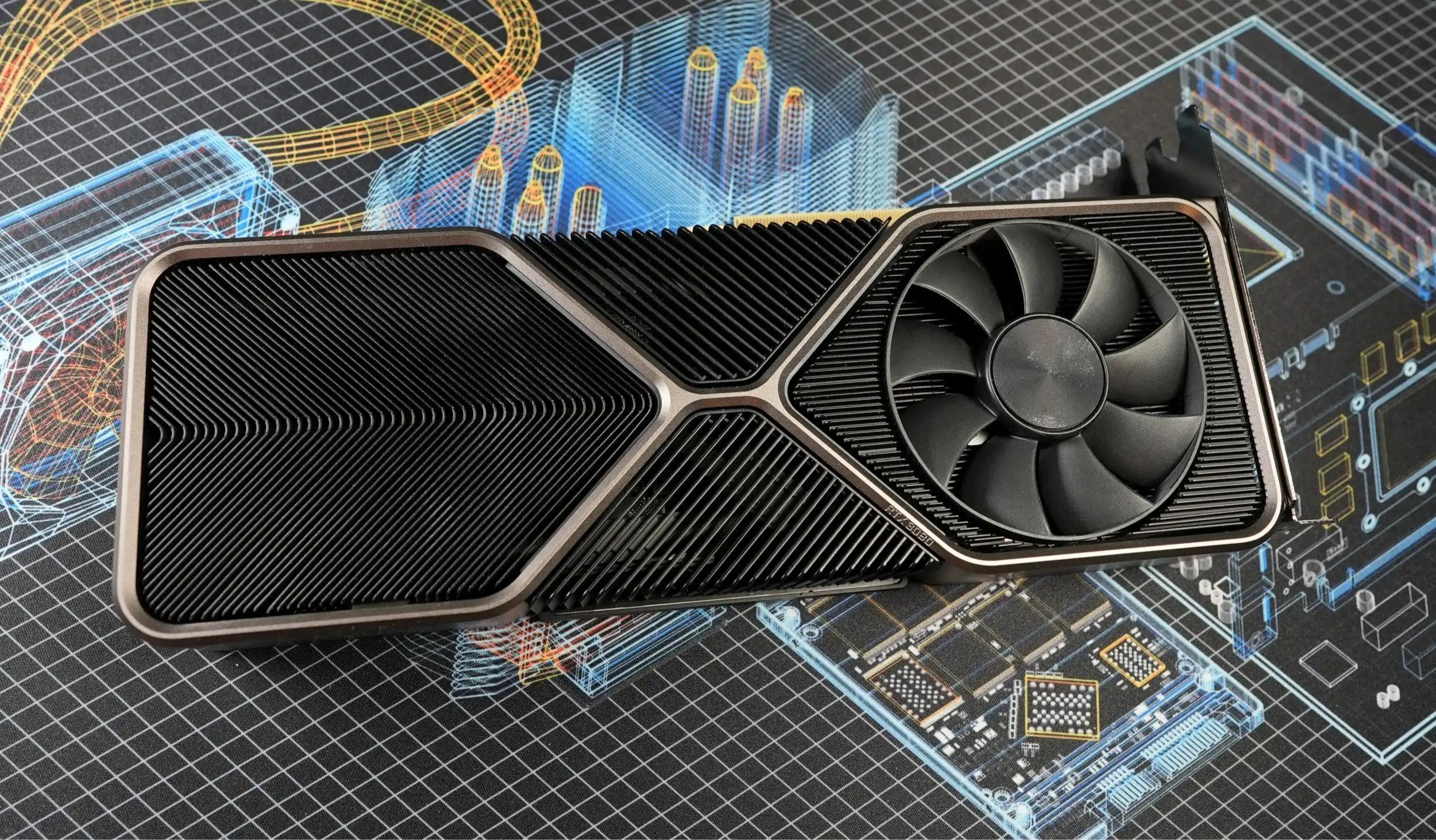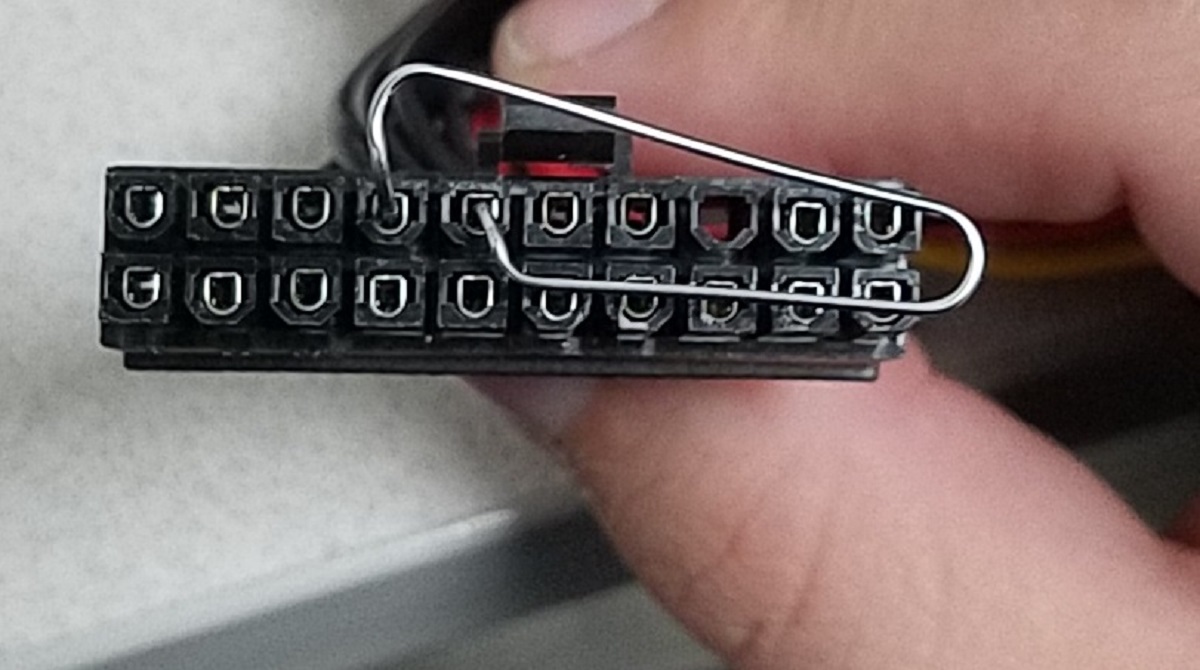The Current Graphics Card Shortage
The world is currently experiencing a severe shortage of graphics cards, leaving gamers and tech enthusiasts frustrated and unable to upgrade their systems. This shortage has caused prices to skyrocket, making it even more challenging for consumers to get their hands on the latest and most powerful GPUs.
One of the main reasons behind this shortage is the overwhelming demand for graphics cards from both gamers and cryptocurrency miners. The gaming industry has been experiencing a surge in popularity, with more gamers entering the scene and demanding high-performance GPUs to ensure smooth gameplay and stunning visuals.
However, it’s not just gamers who are vying for graphics cards. The boom in cryptocurrency mining, particularly for currencies like Bitcoin and Ethereum, has led to an unprecedented demand for GPUs. Miners rely on powerful graphics cards to solve complex mathematical problems and earn digital currencies as a reward.
Another factor exacerbating the shortage is the presence of scalpers and automated bots. These individuals and programs use sophisticated techniques to snatch up graphics cards as soon as they become available, leaving regular consumers at a significant disadvantage. Scalpers then resell these GPUs at inflated prices, capitalizing on the shortage and further driving up costs.
The impact of the shortage goes beyond the frustrations of gamers and tech enthusiasts. It also has significant economic implications. Retailers and manufacturers are faced with the challenge of meeting the demand while also combating scalpers and ensuring fair distribution. The shortage has led to a decrease in availability of graphics cards, ultimately impacting the overall growth of the gaming and tech industries.
Manufacturers are aware of the issue and are taking steps to address it. They are increasing production and implementing measures to prevent scalpers from obtaining large quantities of graphics cards. There have also been discussions about introducing new technologies to make mining cryptocurrency less GPU-dependent, which could help alleviate the strain on the graphics card market.
However, it’s important to note that solving the graphics card shortage is a complex process that will take time. The demand for graphics cards shows no signs of slowing down, and it may be a while before supply catches up with the growing needs of gamers and miners. For now, consumers can only hope for improved availability and fair pricing in the near future.
The Cause of the Graphics Card Shortage
The graphics card shortage that the world is currently experiencing can be attributed to several factors that have created a perfect storm in the market. Understanding these causes is crucial in comprehending the severity and complexity of the issue.
One of the primary causes of the graphics card shortage is the increased demand from gamers. With the continuous advancements in technology, gamers are seeking more powerful graphics cards to enhance their gaming experience. The rise in popularity of competitive gaming and the advent of virtual reality have further fueled this demand. As a result, gamers are constantly vying for the latest GPUs, leading to shortages and high prices.
Another significant factor contributing to the shortage is the cryptocurrency mining boom. Mining for cryptocurrencies like Bitcoin and Ethereum requires substantial computational power, which is primarily provided by high-performance graphics cards. As the value of these digital currencies skyrocketed, so did the number of individuals and organizations engaged in mining activities, thus intensifying the demand for graphics cards.
Unfortunately, the shortage is also exacerbated by the presence of scalpers and bots. Scalpers are individuals who exploit the limited availability of graphics cards by purchasing them in bulk and reselling them at exorbitant prices, taking advantage of desperate consumers. Bots, on the other hand, are automated programs that quickly snatch up available stocks, leaving genuine buyers empty-handed. These scalpers and bots further strain the supply chain, worsening the shortage for regular consumers.
The economic impact of the graphics card shortage cannot be underestimated. The shortage has led to increased prices, making it even more challenging for gamers and tech enthusiasts to afford the hardware they need. It has also affected retailers and manufacturers who struggle to meet the overwhelming demand while combating the scalpers and ensuring fair distribution.
To address the shortage, manufacturers have ramped up production to increase supply. They are also implementing measures to tackle scalpers and bots, such as introducing innovative purchasing systems and imposing limits on the number of graphics cards that can be bought at once. Additionally, there have been discussions about developing alternative technologies that reduce the reliance on graphics cards for cryptocurrency mining, ultimately easing the strain on the market.
However, it is essential to acknowledge that resolving the graphics card shortage is a complex and time-consuming process. The demand for graphics cards continues to rise, and it may take considerable efforts to restore balance in the market. Consumers must remain patient and hopeful for improved availability and fair pricing in the future.
Increased Demand from Gamers
The current graphics card shortage can be largely attributed to the increased demand from gamers. The gaming industry has been experiencing significant growth over the years, with more people joining the gaming community and seeking top-tier gaming experiences.
Gamers today have higher expectations when it comes to graphics performance. They want to immerse themselves in realistic and visually stunning worlds, demanding powerful graphics cards to deliver smooth gameplay and breathtaking visuals. As game developers continue to push the boundaries of graphical fidelity, the need for high-performance GPUs becomes even more critical.
Competitive gaming has also played a significant role in driving up the demand for graphics cards. Esports has emerged as a global phenomenon, attracting millions of players and viewers. Professional gamers and enthusiasts alike require powerful graphics cards to achieve high frame rates and low latency, giving them a competitive edge in online multiplayer games.
Furthermore, the rise of virtual reality (VR) gaming has fueled the demand for graphics cards. VR offers an immersive and lifelike gaming experience, but it requires substantial computational power to render the graphics in real-time. Gamers who want to explore the exciting world of virtual reality need high-performance graphics cards to power their VR headsets.
The COVID-19 pandemic has also influenced the increased demand for graphics cards. With more people staying at home, there has been a surge in gaming activity as a form of entertainment and social interaction. As a result, many gamers have been motivated to upgrade their gaming setups, including investing in more powerful graphics cards.
Unfortunately, the high demand for graphics cards has outpaced the supply, leading to shortages and inflated prices. Scalpers and bots take advantage of this situation by purchasing large quantities of graphics cards and reselling them at significantly higher prices. This leaves genuine gamers struggling to find affordable options and contributes to the overall frustration within the gaming community.
To meet this increased demand, manufacturers are actively working to ramp up production and explore alternative manufacturing methods. They are also implementing strategies to combat scalpers and ensure fair distribution. However, it may take time for the supply to catch up with the growing demand, and gamers may have to exercise patience and consider alternative options in the meantime.
Cryptocurrency Mining Boom
The graphics card shortage can be attributed to the cryptocurrency mining boom that has taken the tech world by storm. Cryptocurrencies like Bitcoin and Ethereum have seen tremendous growth in popularity and value, leading to a surge in mining activities that heavily rely on powerful graphics cards.
Cryptocurrency mining involves solving complex mathematical problems that validate and secure transactions on the blockchain network. This process requires significant computational power, making graphics cards the preferred hardware for mining enthusiasts. The more powerful the graphics card, the higher the mining efficiency and potential rewards.
As the value of cryptocurrencies skyrocketed, more individuals and organizations jumped on the mining bandwagon. They saw mining as an opportunity to accumulate these digital assets and potentially generate substantial profits. This sudden influx of miners created an unprecedented demand for graphics cards, far exceeding what the market could supply.
The rapid increase in demand from cryptocurrency miners resulted in severe shortages of graphics cards. Retailers struggled to keep up with the high demand, and prices soared due to the limited supply and increased competition among miners to acquire the latest and most powerful GPUs.
The situation was further aggravated by bot-driven purchasing and scalping. Automated programs, also known as bots, were developed to monitor online retailers and purchase graphics cards as soon as they became available. These bots acted faster than human buyers, capturing available stock within seconds. Scalpers then capitalized on the scarcity created by the mining boom, purchasing graphics cards in bulk and reselling them at significantly inflated prices.
The impact of the cryptocurrency mining boom on the graphics card market has been significant. It has driven up prices, making it difficult for gamers and tech enthusiasts to afford the hardware they need. It has also created scarcity and frustration among consumers who find it nearly impossible to acquire the latest GPUs at retail prices.
Manufacturers have been grappling with the challenge of balancing the demand from miners and gamers. They have worked to increase production and prioritize the needs of gamers, as well as implementing measures to mitigate the impact of scalpers and bots. Some manufacturers have introduced mining-specific graphics cards to meet the demand from miners without affecting the availability of gaming-focused GPUs.
Looking ahead, the future of the graphics card market will continue to be influenced by the cryptocurrency mining industry. As cryptocurrencies evolve and new technologies emerge, the demand landscape may shift. Manufacturers will need to adapt and find innovative solutions to ensure a fair and sustainable distribution of graphics cards to both gamers and cryptocurrency miners.
Scalpers and Bots
One of the significant challenges contributing to the current graphics card shortage is the presence of scalpers and automated bots in the market. These actors exploit the limited availability of graphics cards, exacerbating the scarcity and driving up prices, much to the frustration of genuine consumers.
Scalpers are individuals or groups who purchase graphics cards in bulk with the intention of reselling them at significantly inflated prices. They take advantage of the high demand and low supply, capitalizing on the desperation of consumers who are eager to get their hands on the latest GPUs.
To accomplish their objectives, scalpers employ a variety of strategies. They use automated programs—bots—that can swiftly purchase multiple graphics cards as soon as they become available online. These bots are capable of monitoring stock levels, alerting scalpers when new inventory arrives, and completing the purchase in a matter of seconds. This leaves regular consumers at a considerable disadvantage, as they are unable to compete with the speed and efficiency of these automated systems.
The scalpers then resell the acquired graphics cards through various channels, such as online marketplaces or private sales, often at exorbitant prices. This not only fuels the scarcity of available graphics cards but also contributes to the soaring prices in the secondary market. Genuine consumers often find themselves grappling with the dilemma of either paying significantly higher prices or waiting indefinitely for a restock at regular retail prices.
The impact of scalpers and bots extends beyond individual frustration. They disrupt the fair and equitable distribution of graphics cards, inhibiting the accessibility of these essential components for gamers and tech enthusiasts. The presence of scalpers also dampens consumer trust and confidence, creating a sense of disillusionment and skepticism within the market.
To combat the influence of scalpers and bots, both manufacturers and retailers have implemented various measures. These include implementing stricter purchasing systems, such as CAPTCHAs and bot-blocking mechanisms, to deter automated programs from making bulk purchases. Retailers have also imposed limits on the number of graphics cards that can be purchased per customer, ensuring that more consumers have a chance to acquire the hardware they need.
Furthermore, some manufacturers have collaborated with retailers to implement verification systems that aim to identify and prevent scalpers from acquiring excessive quantities of graphics cards. By employing these strategies, manufacturers and retailers hope to level the playing field and prioritize the needs of genuine consumers over those seeking to profit from the ongoing shortage.
However, the battle against scalpers and bots is an ongoing one, requiring constant vigilance and adaptation. As technology advances, scalpers and bot developers find new ways to circumvent countermeasures. It remains to be seen how effective these measures will ultimately be in curbing the influence of scalpers and ensuring fair access to graphics cards for all consumers.
Economic Impact of the Shortage
The graphics card shortage has had a significant economic impact, affecting various sectors within the gaming and tech industries. The scarcity of graphics cards and the resulting inflated prices have created a ripple effect that impacts both consumers and businesses.
One of the primary consequences of the shortage is the increase in prices for graphics cards. As supply struggles to meet demand, the limited availability of GPUs has driven up their prices, making them unaffordable for many consumers. This not only affects individual gamers and tech enthusiasts but also has implications for system builders, PC manufacturers, and retailers who rely on graphics card sales to sustain their businesses.
The high prices and limited availability of graphics cards have created a barrier for entry for many consumers. Gamers who wish to upgrade their systems or build new gaming rigs may find themselves restrained by budget constraints or unable to obtain the necessary hardware. As a result, the growth of the gaming industry may be hindered, as players are unable to fully enjoy the latest games or invest in new gaming experiences.
Additionally, retailers have been impacted by the shortage. Despite the high demand for graphics cards, they face challenges in maintaining a steady supply and fulfilling customer orders. This can lead to decreased revenue for retailers, as sales are hampered by the limited availability of GPUs and the frustration of consumers who may turn to alternative platforms to acquire their desired hardware.
The shortage has also had implications for manufacturers. While the increase in demand for graphics cards presents an opportunity for increased sales and revenue, manufacturers must contend with the difficulty of scaling up production to meet this demand. This may require additional investments in manufacturing facilities and supply chain management, which can have long-term financial implications.
Furthermore, the presence of scalpers and bots in the market exacerbates the economic impact of the shortage. Scalpers purchase graphics cards at retail prices and then resell them at significantly higher prices, profiting from the scarcity created by the shortage. This not only drives up prices but also undermines consumer trust and confidence in the market.
Overall, the graphics card shortage affects not only individuals but also the broader economy. The lack of availability, increased prices, and barriers to entry have implications for gamers, businesses, and the gaming industry as a whole. It is crucial for manufacturers, retailers, and consumers to work together to address the challenges posed by the shortage and find sustainable solutions that ensure fair access to graphics cards for all.
What Manufacturers are Doing
Manufacturers of graphics cards are aware of the challenges posed by the current shortage and are actively taking steps to address the issue. They are implementing several strategies to meet the increasing demand and alleviate the strain on the market.
One of the key actions taken by manufacturers is to ramp up production. They are increasing manufacturing capacity to produce more graphics cards and meet the growing demand from gamers, tech enthusiasts, and cryptocurrency miners. By scaling up production, manufacturers aim to replenish stock levels and improve the availability of graphics cards in the market.
Manufacturers are also collaborating with retailers and implementing measures to combat scalpers and bots. They are working closely with their retail partners to develop and implement verification systems, such as unique purchase codes or validation processes, to ensure that consumers have a fair chance to purchase graphics cards. These collaboration efforts aim to prevent scalpers from acquiring excessive quantities of GPUs and help distribute them more equitably among genuine consumers.
Furthermore, some manufacturers are exploring alternative manufacturing methods for graphics cards. They are investigating new technologies and materials that could streamline the production process, increase efficiency, and shorten lead times. These innovations may help accelerate the supply of graphics cards to meet the demand more effectively.
Additionally, manufacturers are investing in research and development to improve the efficiency and performance of graphics cards. They are constantly innovating and releasing new models with enhanced features, allowing gamers and tech enthusiasts to enjoy the latest advancements in graphics technology. By continuously pushing the boundaries of what graphics cards can achieve, manufacturers aim to satisfy consumer expectations and address the ever-increasing demand.
Moreover, industry leaders are engaging in ongoing discussions and collaborations to find long-term solutions to the graphics card shortage. Manufacturers, industry associations, and other stakeholders are exploring ways to balance the needs of gamers and cryptocurrency miners, taking into consideration the evolving landscape of technology and the changing dynamics of the market. This collaborative effort aims to ensure a sustainable and equitable distribution of graphics cards.
While manufacturers are making concerted efforts to address the shortage, it is important to note that resolving it completely may take time. Meeting the increasing demand and balancing supply in a rapidly evolving market is a complex challenge. However, manufacturers are committed to finding solutions, improving availability, and making graphics cards more accessible to consumers.
The Future of Graphics Card Availability
The graphics card shortage has raised concerns about the future availability of these essential components. As the demand for high-performance GPUs continues to rise, it is important to consider what the future holds for graphics card availability and how the industry is adapting to meet this ongoing challenge.
Manufacturers are working diligently to increase production and improve the availability of graphics cards. They are investing in expanding manufacturing capacity, exploring alternative production methods, and optimizing supply chain management to ensure a steady supply of GPUs to the market. These efforts aim to gradually alleviate the shortage and provide consumers with more options and better accessibility.
One potential solution on the horizon is the development of new technologies that reduce the reliance on graphics cards for cryptocurrency mining. As cryptocurrencies evolve and new mining methods emerge, manufacturers are actively researching and exploring alternative hardware solutions that are more efficient and purpose-built for mining. This could help alleviate the strain on the graphics card market and mitigate the impact of the mining boom on availability.
Additionally, advancements in graphics card architecture and chip manufacturing processes are expected to enhance efficiency and performance. With each new generation of graphics cards, manufacturers are pushing the boundaries of what is possible, delivering more powerful and energy-efficient GPUs. These advancements will not only cater to the demands of gamers but also help meet the increasing computational requirements of emerging technologies like virtual reality, artificial intelligence, and machine learning.
The ongoing collaboration between manufacturers, retailers, and industry associations is also crucial in shaping the future of graphics card availability. These collective efforts aim to develop strategies and solutions to curb scalping, combat bots, and ensure fair distribution of graphics cards. By working together, stakeholders can create a more equitable market environment that benefits genuine consumers and maintains the growth and sustainability of the gaming and tech industries.
As we look to the future, it is essential to manage expectations. The demand for graphics cards is expected to remain high, fueled by the continuous advancements in gaming and emerging technologies. While manufacturers are committed to meeting this demand, it may take time for the supply to catch up. Consumers may need to exercise patience as the industry adjusts to these changing dynamics.
Ultimately, the future of graphics card availability relies on a multifaceted approach involving increased production, technological innovations, and collaborative efforts. By addressing the current challenges and investing in long-term solutions, manufacturers and industry stakeholders aim to ensure a sustainable and accessible supply of graphics cards for gamers, tech enthusiasts, and professionals who rely on these essential components.







